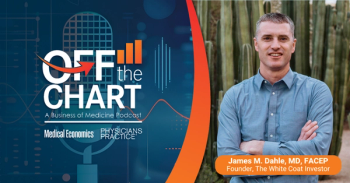
Explaining Investment Risk Premiums to Physicians
Investing - much like the decisions in your medical career - is about sometime taking risks. But you also should know what risk pays and what risk does not.
I have a client who is a trained ENT physician. In addition to practicing otolaryngology, he also does facial plastic surgery and audiology treatment. He makes money from all three of his medical services. They complement each other and make this practice more financially solid.
Investing is all about taking risks. Some risk pays, and some risk doesn’t pay. It is very important for doctor investors to know what risk pays.
According to Nobel Laureate Eugene Fama, there are three major risks that pay. The "wages" from taking these risks are called risk premiums.
1. Equity risk premium: The "wage" from taking stock market risk over and above holding safe treasury bills.
2. Small cap risk premium: The "wage" from taking small company risk over and above big company risk.
3. Value risk premium: The "wage" from taking non-growing company risk over and above growing company risk.
Here are the three risk premiums from 2004 to 2013 (in percent):
Equity
SmallCap
Value
RF
2004
10.73
5.05
9.83
1.2
2005
3.1
-2.26
9.07
2.98
2006
10.59
0.32
14.28
4.8
2007
1.05
-8.07
-12.22
4.66
2008
-38.35
3.83
0.95
1.6
2009
28.27
8.63
-5.74
0.1
2010
17.39
13.58
-3.21
0.12
2011
0.47
-6
-6.91
0.04
2012
16.29
0.44
8.09
0.06
2013
35.21
7.89
0.3
0.02
Total
84.75
23.41
14.44
15.58
Now let me make a few observations to help you understand the data.
Observation 1: The last column (RF) is the risk-free rate of return. It is achieved by holding short-term treasury bills. If you examine it carefully, risk free returns can be extremely low in some years, like 0.02 percent in 2013, but it is never negative. That’s why it is called a risk-free return.
Observation 2: The total risk-free return for the whole decade from 2004 to 2013 is 15.58 percent. This is basically the reward for time value of money, not for taking any risk.
Observation 3: The column "Equity" denotes equity market returns over and above risk-free returns. This is the additional return, or equity risk premium, investors earn from taking equity risk. Note that nine out of the last ten years, the equity risk premium was positive. The total equity risk premium for the whole decade was 84.75 percent.
Observation 4: The column "SmallCap" denotes small cap stock returns above large cap stock returns, or small cap premium. As you can see, small cap outperformed large cap seven out of the last ten years. The total small cap premium for the whole decade is 23.41 percent.
Observation 5: The column "Value" denotes value stock returns above growth stock returns, in other words value premium. Here you can see value stocks outperformed growth stocks six out of the last ten years. The total value premium for the whole decade was 14.44 percent.
Observation 6: Though over the long run, it pays to take equity risk, or small cap risk or value risk, in some years, you may lose money doing so. That’s why they are called risk premiums.
So you see, a smart investor is not unlike my smart physician client, they would take all risk than pay and earn all risk premiums. In reality, however, I know many doctors who are not smart investors. Some of them are all in cash and they are missing out on all risk premiums, Some of them only invest in glamorous large cap stock like Apple and are missing out on small cap and value premiums.
Newsletter
Optimize your practice with the Physicians Practice newsletter, offering management pearls, leadership tips, and business strategies tailored for practice administrators and physicians of any specialty.








